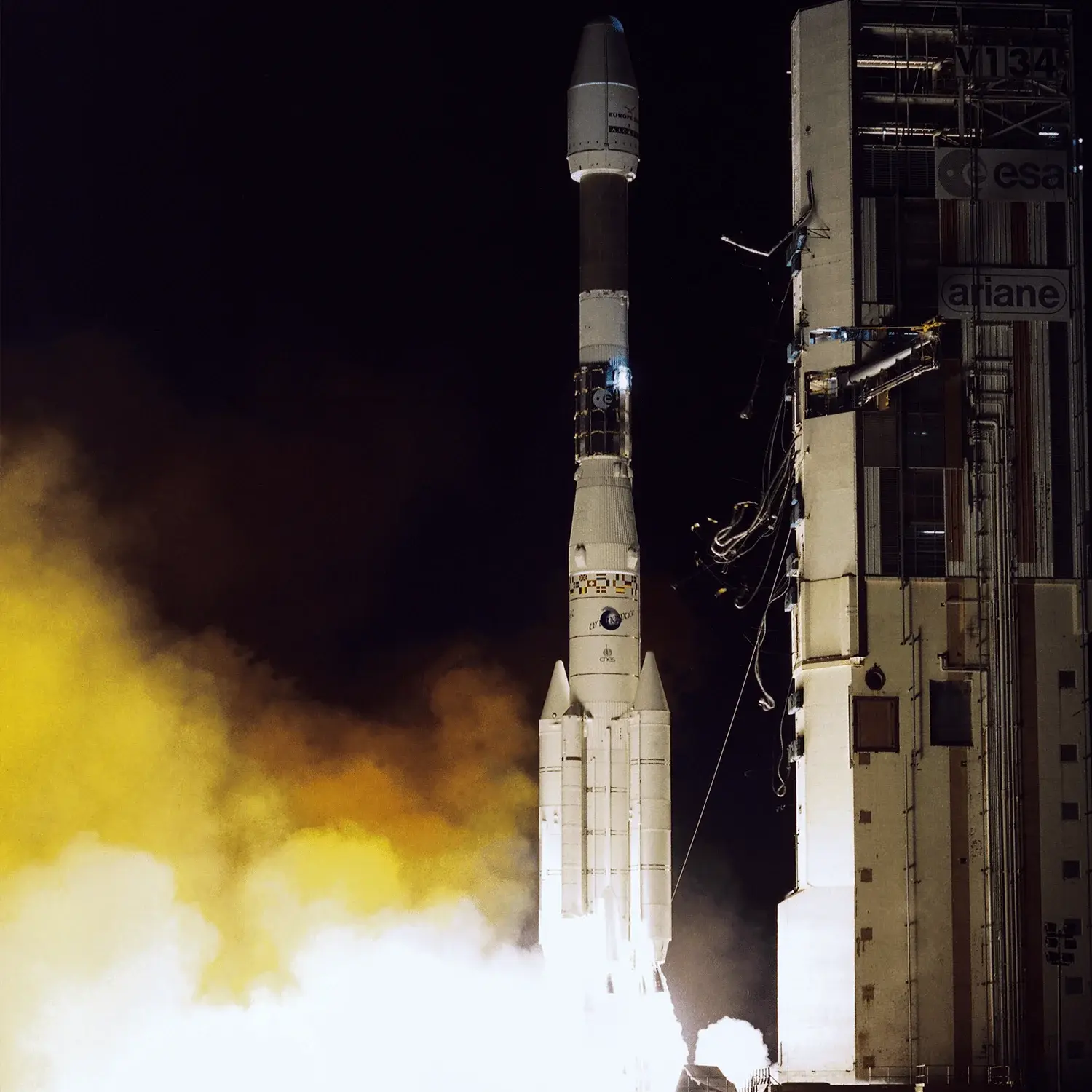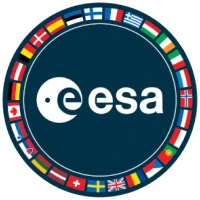TVSAT-2 & Hipparcos
Launch Success
Liftoff Time (GMT)
23:25:53
Tuesday August 8, 1989
Mission Details
Launch Notes
Flight V33.
Hipparcos
Hipparcos was a scientific satellite of the European Space Agency (ESA), launched in 1989 and operated until 1993. It was the first space experiment devoted to precision astrometry, the accurate measurement of the positions of celestial objects in the sky. This permitted the accurate determination of proper motions and parallaxes of stars, allowing a determination of their distance and tangential velocity. When combined with radial velocity measurements from spectroscopy, this pinpointed all six quantities needed to determine the motion of stars. The resulting Hipparcos Catalogue, a high-precision catalogue of more than 118,200 stars, was published in 1997. The lower-precision Tycho Catalogue of more than a million stars was published at the same time, while the enhanced Tycho-2 Catalogue of 2.5 million stars was published in 2000. Hipparcos' follow-up mission, Gaia, was launched in 2013.
Geostationary Transfer Orbit
1 Payload
210 kilograms
TVSAT-2
Like the French TDF, TV-Sat satellites are based on the Aerospatiale Spacebus 300 plattorm and were created by the Eurosatellite consortium of Aerospatiale and Messerschmitt-Broelkow-Blohm (MBB). The technical specifications of TV-Sat are also virtually identical with those of TDF, and both satellites share the same geostationary locale near 19 degrees W. MBB was responsible for the attitude and orbit control systems on both TDF and TV-Sat using the S400 and S10 engines.
Geostationary Transfer Orbit
1 Payload
2,136 kilograms
Rocket


Manufacturer
ESARocket
Diameter: 3.8m
Height: 58.72m
Payload to Orbit
GTO: 4,220 kg
Liftoff Thrust
5,800 Kilonewtons
Stages
3
Strap-ons
4
Launch Site
Stats
Ariane 4
5th
Mission
3rd
Mission of 1989
European Space Agency
24th
Mission
6th
Mission of 1989
1989
63rd
Orbital launch attempt